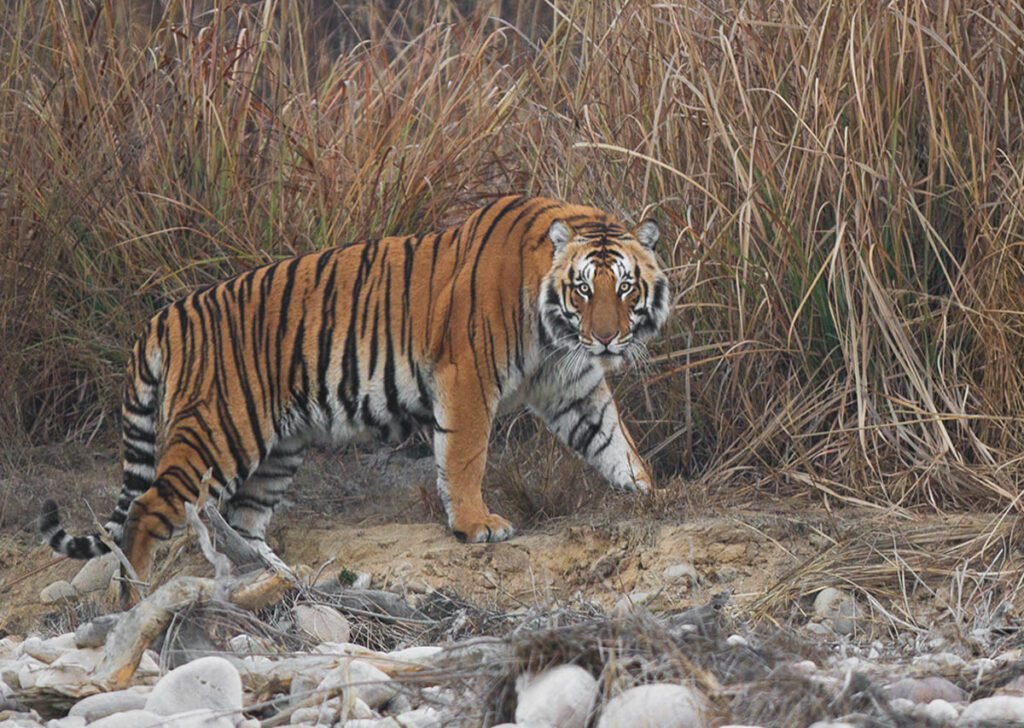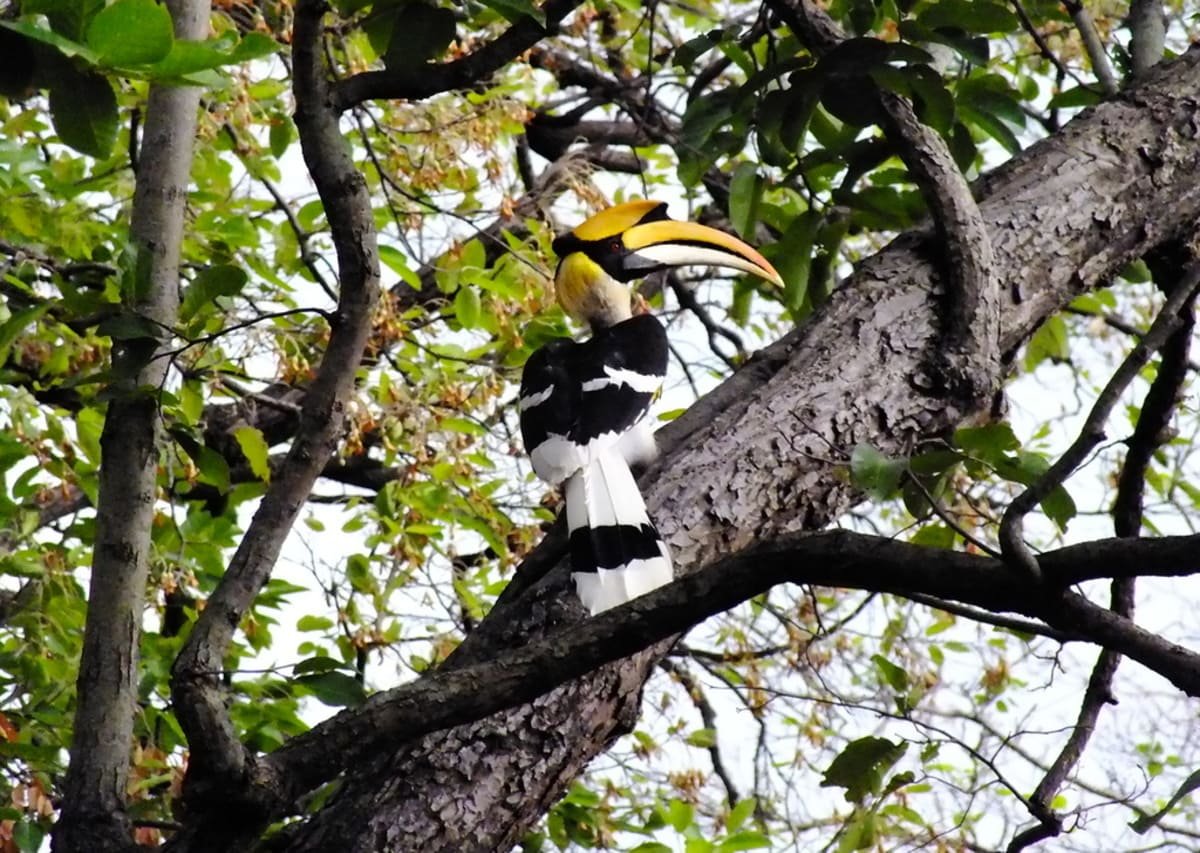Are you a curious nature enthusiast with a devotion for wildlife and adventure? If so, then here are 10 interesting facts to know about Jim Corbett National Park. Jim Corbett National Park stands as one of the most exceptional and ancient tiger habitats in the Himalayan region. The realm of Jim Corbett National Park is bound to capture your imagination. Nestled in the ancient landscapes of Uttarakhand, India, this park stands as a testament to the mesmerizing diversity of our planet’s flora and fauna. Here, we delve into 10 captivating facts that unveil the beauty of Jim Corbett National Park.
Table of Contents
Unveiling the Natural Gem Jim Corbett National Park, named after the renowned hunter-turned-conservationist Jim Corbett, Plagiarism on this green marked stands as a beacon of India’s commitment to preserving its rich biodiversity. Spanning over 520 square kilometers, the park encompasses a variety of ecosystems, from dense forests to grasslands, rivers, and lakes.
The Legacy of Jim Corbett: A Brief Overview
The park’s name pays homage to Jim Corbett, a legendary figure celebrated for his efforts in wildlife conservation. His book “Man-Eaters of Kumaon” showcased his encounters with man-eating tigers and leopards, fostering a profound connection between humans and the animal kingdom.
10 Interesting Facts OF Jim Corbett National Park:-
Fact 1: A Haven for the Royal Bengal Tigers

Jim Corbett National Park Claims one of the densest populations of the majestic Royal Bengal tigers in the world. The tiger population in Corbett currently stands at 252. These apex predators roam freely in their natural habitat, offering visitors a rare opportunity to witness these elusive creatures in their element. It’s like Nature’s superhero, playing a big role in our stories, traditions, and myths. People have looked up to it as the protector and ruler of the forest – a sort of woodland hero.
Fact 2: Where Nature and History Converge
Jim Corbett National Park stands as the country’s inaugural national park, its origins tracing back to 1936 during the era of British rule. Initially known as Hailey National Park, it pays homage to William Malcolm Hailey, a former governor of the United Provinces, and underwent its first renaming to Ramganga in the mid-1950s. Later in that same decade, the park was renamed Corbett in honor of Jim Corbett. The park’s history intertwines with tales of colonial-era railways and ancient civilizations. The remnants of the Kalagarh Dam, built during the British colonial period, echo with the whispers of a bygone era.
Fact 3: Encompassing Ecological Zones
Jim Corbett spans diverse ecological zones, from dense forests to grasslands, creating a unique environment that supports a wide array of flora and fauna, contributing to the park’s rich biodiversity. The park’s topography spans five distinct zones, each characterized by unique landscapes and wildlife. From the rugged terrain of the Himalayan foothills to the alluvial plains, every zone offers a novel adventure.
Fact 4: Feathered Wonders: Avifauna Galore

Jim Corbett National Park isn’t just a haven for mammals; it’s also a paradise for bird enthusiasts. With over 600 avian species, including the resplendent peafowl and the majestic crested serpent eagle, great hornbill, kingfishers, and vibrant Indian pittas, making it a hotspot for bird enthusiasts.
Fact 5: Riverside Revelry: The Ramganga River
The Ramganga River, meandering through the heart of the park, sustains a remarkable diversity of flora and fauna. It’s not uncommon to spot elephants, deer, and even tigers quenching their thirst along its banks. The riverbanks become an essential part of the ecosystem, attracting various more species. Be it a leisurely walk by the riverside, a tranquil picnic along the banks, or a contemplative pause as the sun gracefully bids farewell, the river weaves itself into the fabric of your experiences, crafting moments to be cherished.
Fact 6: Breath-taking Landscapes and Flora
The park’s landscapes oscillate between rolling hills, lush valleys, and verdant grasslands. The Sal and Bamboo forests lend an ethereal aura, while the fragrant flowers of the Kachnar tree add vibrant hues to the canvas.
Fact 7: An Array of Fauna: More Than Just Tigers
While tigers take the spotlight, the park shelters numerous other species. Leopards, elephants, Himalayan goral, Chital, wild boars, and various deer species coexist harmoniously, creating a rich tapestry of biodiversity. Corbett also boasts a rich variety of aquatic fauna and birdlife, featuring around 600 species. Some notable species include the great pied hornbill, White-Backed Vulture, Hodgson’s bushchat, orange-breasted green pigeon, Pallas fish eagle, golden oriole, tawny fish owl, Indian Pitta, Scarlet Minivet, and reptilian creatures like the critically endangered Gharial, mugger crocodiles, the king cobra, and many others.
Fact 8: The Thrill of Safari Adventures

Immersing yourself in the exhilarating wildlife of Jim Corbett National Park is undeniably the ultimate way to savor your getaway, providing a respite from the hustle and bustle of your daily routine. The establishment of this wildlife sanctuary occurred in 1936, initiated by Jim Corbett, a former hunter who transformed into a dedicated conservationist. Whether you opt for a Jeep safari or an elephant-back ride, the adrenaline rush of encountering wildlife in their natural habitat is unparalleled.
Read More….
To book Safari you can visit by Click Here….
Fact 9: Conservation Efforts and Initiatives
Jim Corbett National Park serves as a model for effective conservation efforts. The park’s management employs various strategies to mitigate human-wildlife conflict and promote the harmonious coexistence of all inhabitants.
Initiated on April 1st, 1973, Project Tiger stands as a distinctive conservation endeavor dedicated to safeguarding the rare royal Bengal Tiger species. This monumental initiative, the largest of its time, was launched for the first time in Corbett. The park, subsequently designated as Corbett Tiger Reserve (CTR), was among the initial nine reserves established under the visionary leadership of Prime Minister Indira Gandhi.
Today, Corbett National Park is a testament to successful preservation efforts, recognized as one of Asia’s best-preserved parks, boasting a thriving population of 164 tigers and over 600 elephants.
Fact 10: An Inspiring Ecotourism Destination
Ecotourism plays a pivotal role in the sustenance of the park. Responsible tourism not only supports local communities but also contributes to the preservation of this invaluable ecosystem. Visitors are urged to be conscientious in their behavior, actively participating in the safeguarding of this extraordinary natural legacy.
Immersing Yourself in Nature’s Tapestry, as you contemplate the captivating tapestry of Jim Corbett National Park, it becomes evident that this haven transcends being a mere wildlife sanctuary. It’s a testament to the intricate dance of life, where every leaf, every creature, and every breath harmonize in an orchestral symphony of existence.